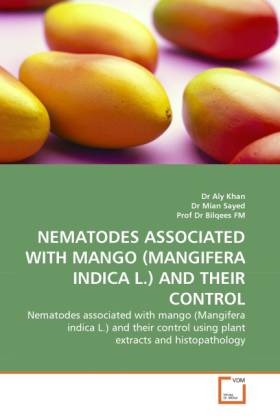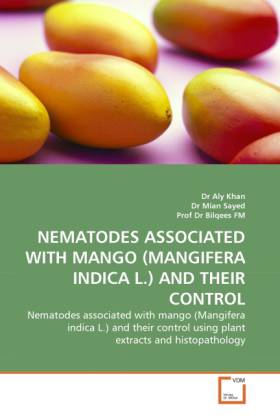
- Afhalen na 1 uur in een winkel met voorraad
- Gratis thuislevering in België vanaf € 30
- Ruim aanbod met 7 miljoen producten
- Afhalen na 1 uur in een winkel met voorraad
- Gratis thuislevering in België vanaf € 30
- Ruim aanbod met 7 miljoen producten
Zoeken
Nematodes Associated with Mango (Mangifera Indica L.) and Their Control
Nematodes associated with mango (Mangifera indica L.) and their control using plant extracts and histopathology
Aly Khan, Mian Sayed, Bilqees Fm
Paperback | Engels
€ 48,45
+ 96 punten
Omschrijving
The Mango is classified as an evergreen and is in the Anacardiaceae family. It is the most important fruit crop of Sindh Province, Pakistan. The area under cultivation in Sindh is approximately 49983 hectares and the yield 352424 tonnes. In a survey of ten localities of Hyderabad and Karachi districts of Sindh, nine genera of nematodes and ten species were recorded. The population densities were measured and highest density was that of Tylenchorhynchus sp. (65/200 cm3). The effect of four plant extracts namely neem, marigold, eucalyptus and ashwagandha on the yield and nematode population associated with mango trees in the field was studied. Histopathology revealed that giant cells were present and the cell of cortex were full of matrix in roots infected with Meloidogyne javanica. This information is useful for parasitologists, plant pathologists and farmers.
Specificaties
Betrokkenen
- Auteur(s):
- Uitgeverij:
Inhoud
- Aantal bladzijden:
- 56
- Taal:
- Engels
Eigenschappen
- Productcode (EAN):
- 9783639323825
- Verschijningsdatum:
- 14/01/2011
- Uitvoering:
- Paperback
- Formaat:
- Trade paperback (VS)
- Afmetingen:
- 152 mm x 229 mm
- Gewicht:
- 95 g

Alleen bij Standaard Boekhandel
+ 96 punten op je klantenkaart van Standaard Boekhandel
Beoordelingen
We publiceren alleen reviews die voldoen aan de voorwaarden voor reviews. Bekijk onze voorwaarden voor reviews.











